
How To Adjust Your Content Strategy for Google’s AI Mode
The author's views are entirely their own (excluding the unlikely event of hypnosis) and may not always reflect the views of Moz.
If your content strategy still relies on traditional SEO playbooks, you're falling behind. Google's AI Mode is a structural shift threatening the visibility models most content-led businesses depend on.
In part one, I explained how Google AI Mode works under the hood. In this second part, I’ll walk you through the strategic changes content teams need to make.
You’ll learn what to stop doing, what to double down on, and how to reposition your content so it still gets discovered in a search experience where clicks are no longer guaranteed.
But first, a caveat…
You can't optimize your way into authority
No matter how well you engineer your content for AI systems, you can’t optimize your way into authority without broader brand recognition.
According to Google’s AI Mode patent, the system evaluates search behavior alongside a wider range of signals in its ecosystem. This includes brand presence across YouTube, Gmail, Chrome, Maps, and anywhere a user might engage with your brand.
The old SEO logic followed a simple path: create content, get traffic, and build brand. That funnel flips in AI Mode, where you build brand first, gain recognition across trusted sources, and then your content starts surfacing.
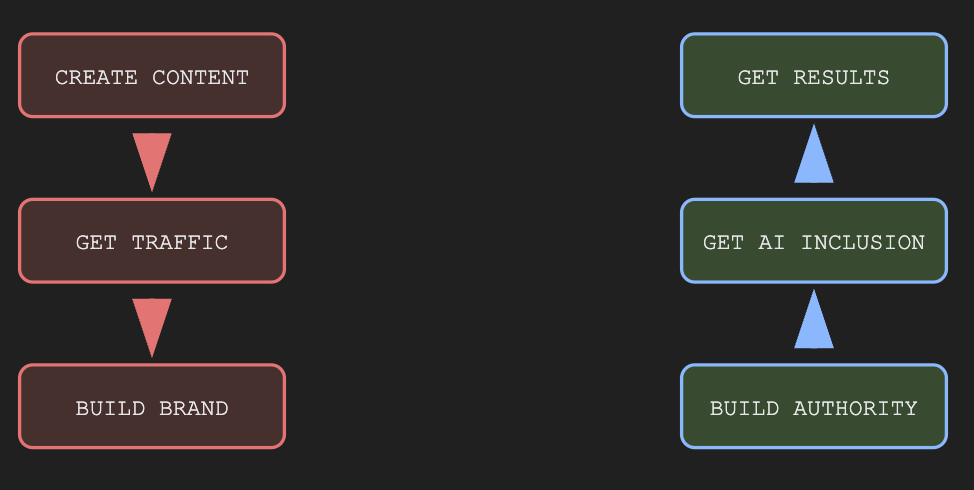
This new model requires:
- Coverage on authoritative sites
- Consistent messaging across social
- Targeted advertising
- Expert contributions across the ecosystem that large language models monitor
6 ways to adjust your content strategy for Google’s AI Mode
Based on everything we've discussed about how this system works, let me walk you through practical strategies for adapting your content to this new reality.
1. Cover the full intent space, not just the main query
In AI Mode, Google expands user queries using synthetic questions before retrieving results. If your content only targets the main keyword, it risks getting bypassed entirely.
For example, when someone searches for "best running shoes," the system might spin that into related queries like:
- What shoes do elite runners use?
- Where can I get fitted for running shoes?
- Are my running shoes too big?
- Which Nike running shoe has the most cushioning?
- Is Asics or Nike better?
Your content must address this broader intent cluster, not just rank for the primary phrase. That means covering:
- Product reviews
- Selection criteria
- Specific use cases
- Brand comparisons
- Durability concerns
- User-specific challenges
Moz has a keyword research tool to help you map these question clusters.
Log in to your Moz Pro account and click Keyword Research. Enter your keyword, choose a location, and click Analyze.
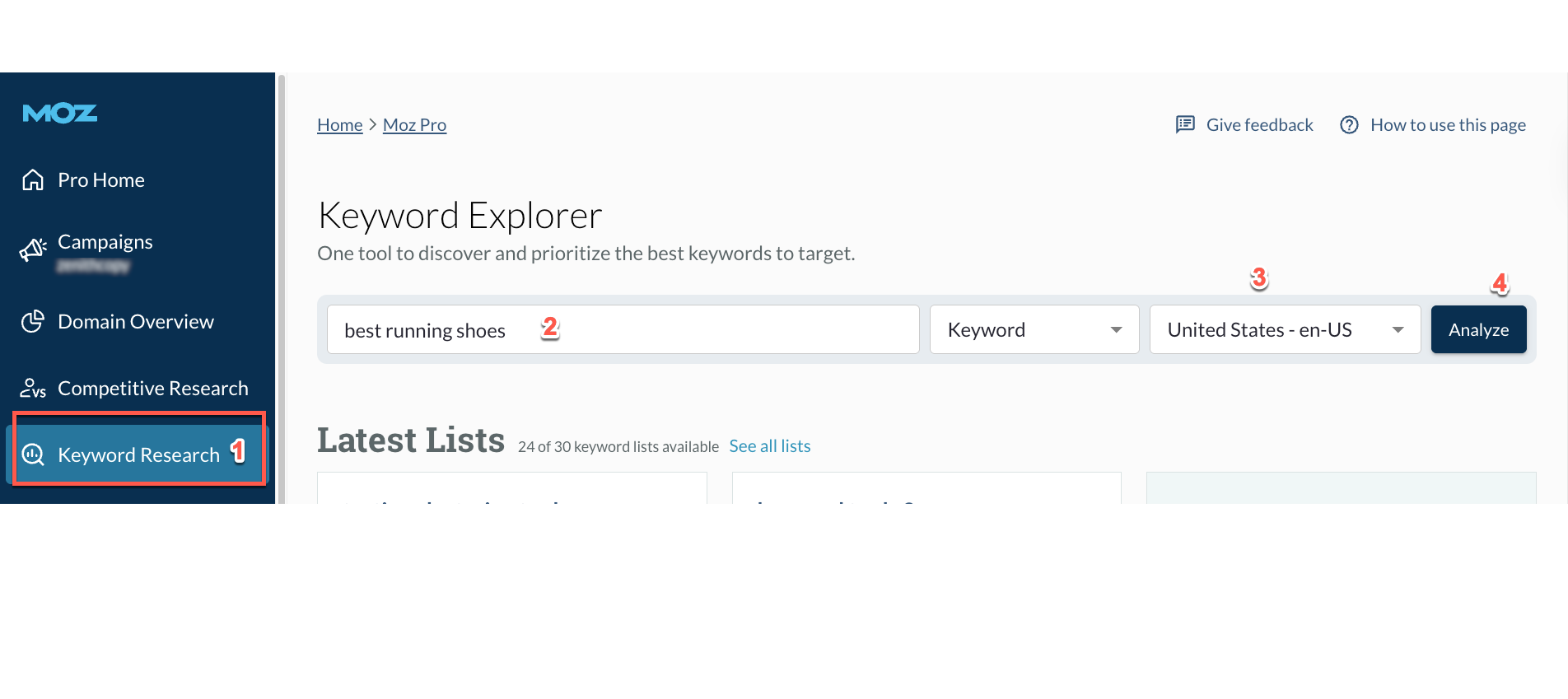
Moz uses AI to automatically cluster and group keywords by intent, and since we want questions, select “View all topics” on the right side.
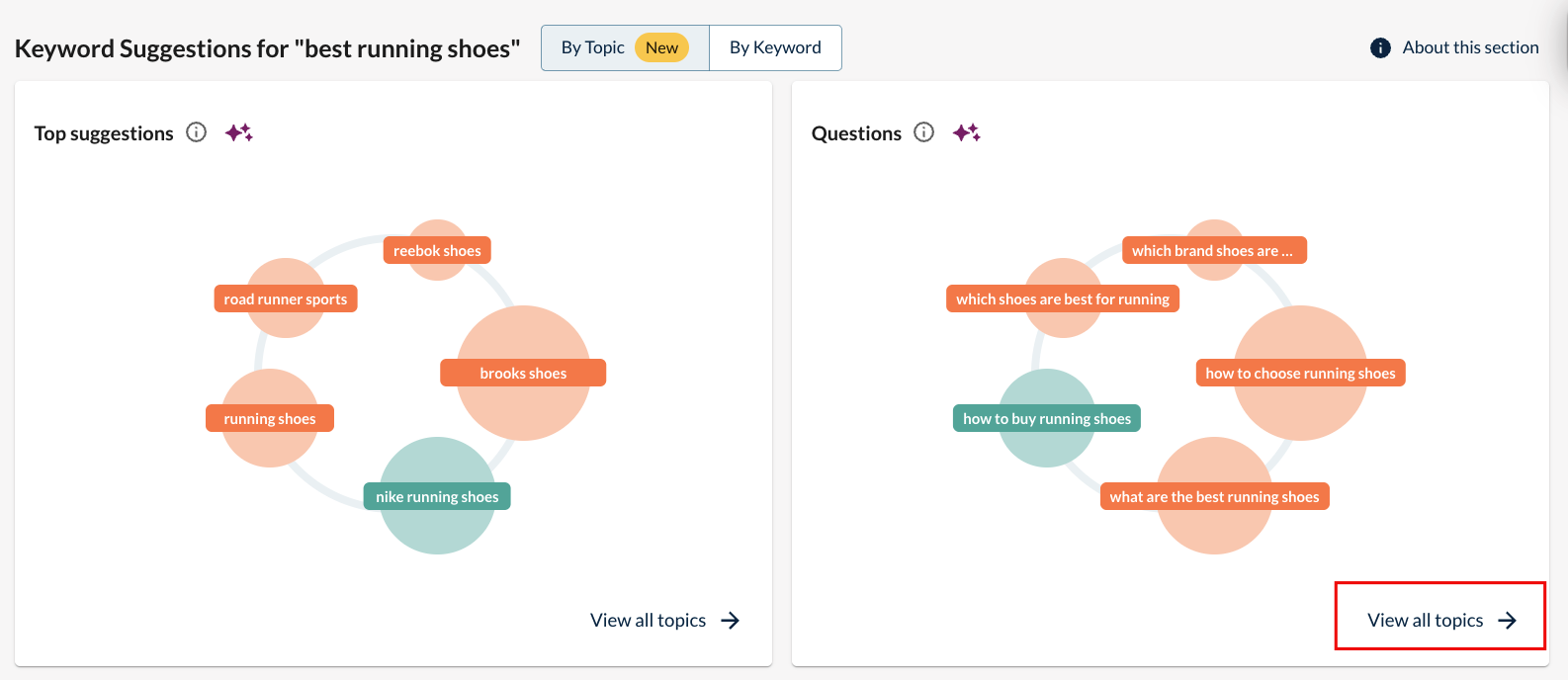
The Topics Tree Map shows the top questions for the query across intent types, giving you a bird's-eye view of the questions people ask about this query.
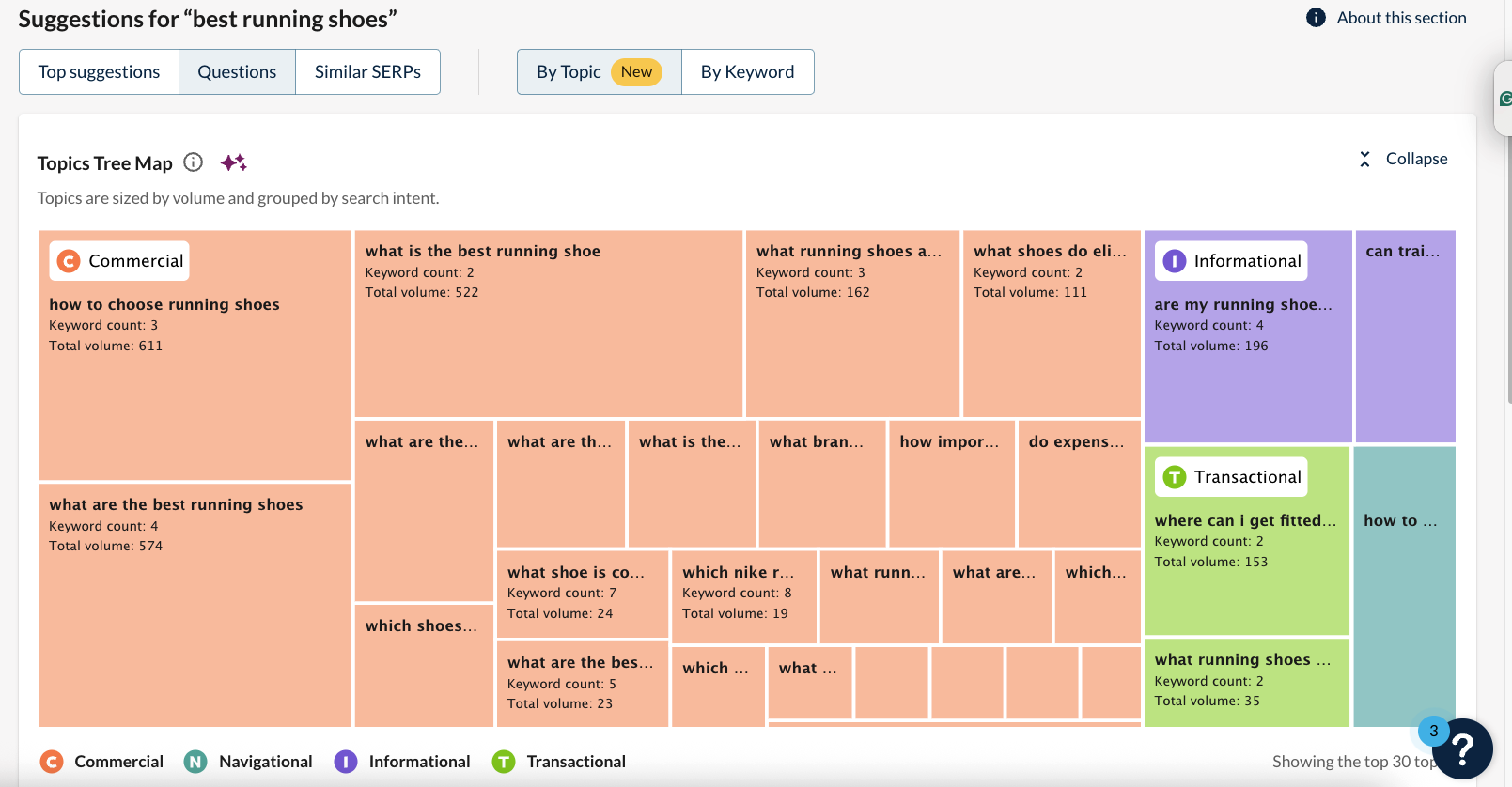
If you scroll down, you’ll see a more detailed list of questions clustered by topic and prioritized by relevance.
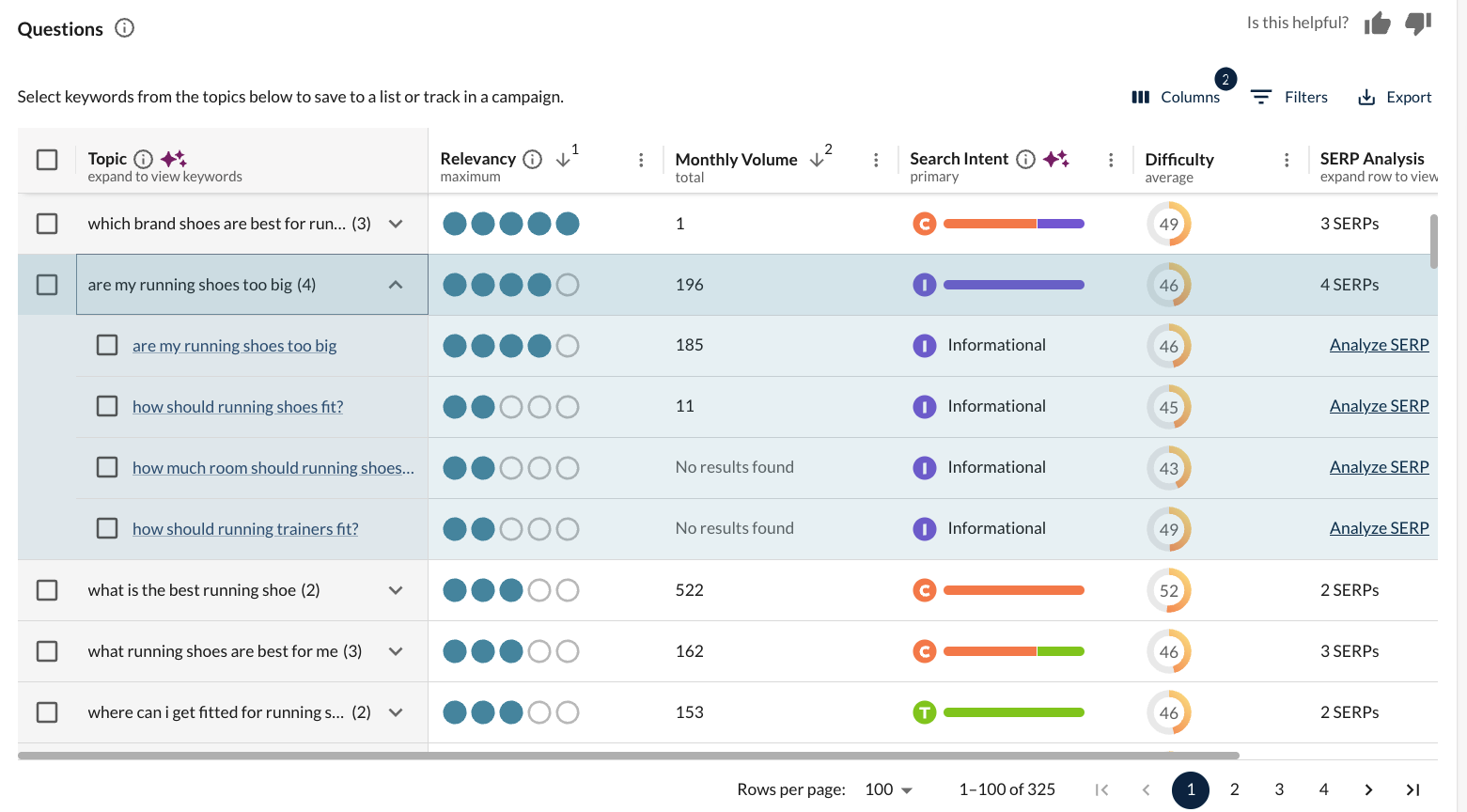
You can also pull "People Also Ask" questions from the SERP Analysis section of Explore by Keyword.
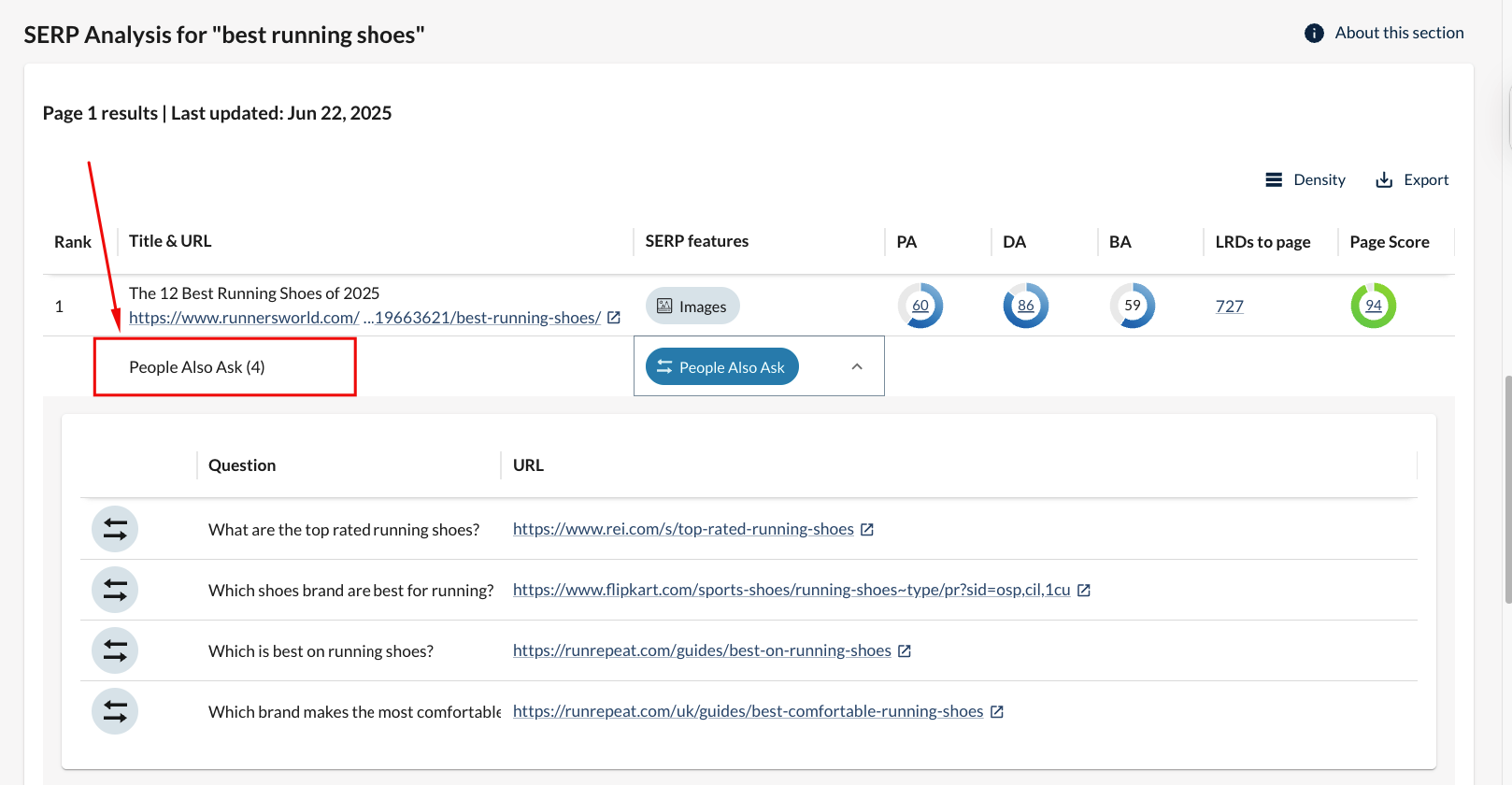
Use the data to build detailed content outlines that cover all angles of a topic, not just the surface-level query you're targeting.
Further reading:
SEO Topic Clusters: Complete Guide, Examples & Free Templates
2. Structure content for retrieval
When Google’s AI systems evaluate your content, they assess quality and check whether specific parts can be extracted for summaries and answers.
AI Mode processes content at the passage level, pulling out modular chunks to build its responses. That means clarity, structure, and modular design are critical for visibility.
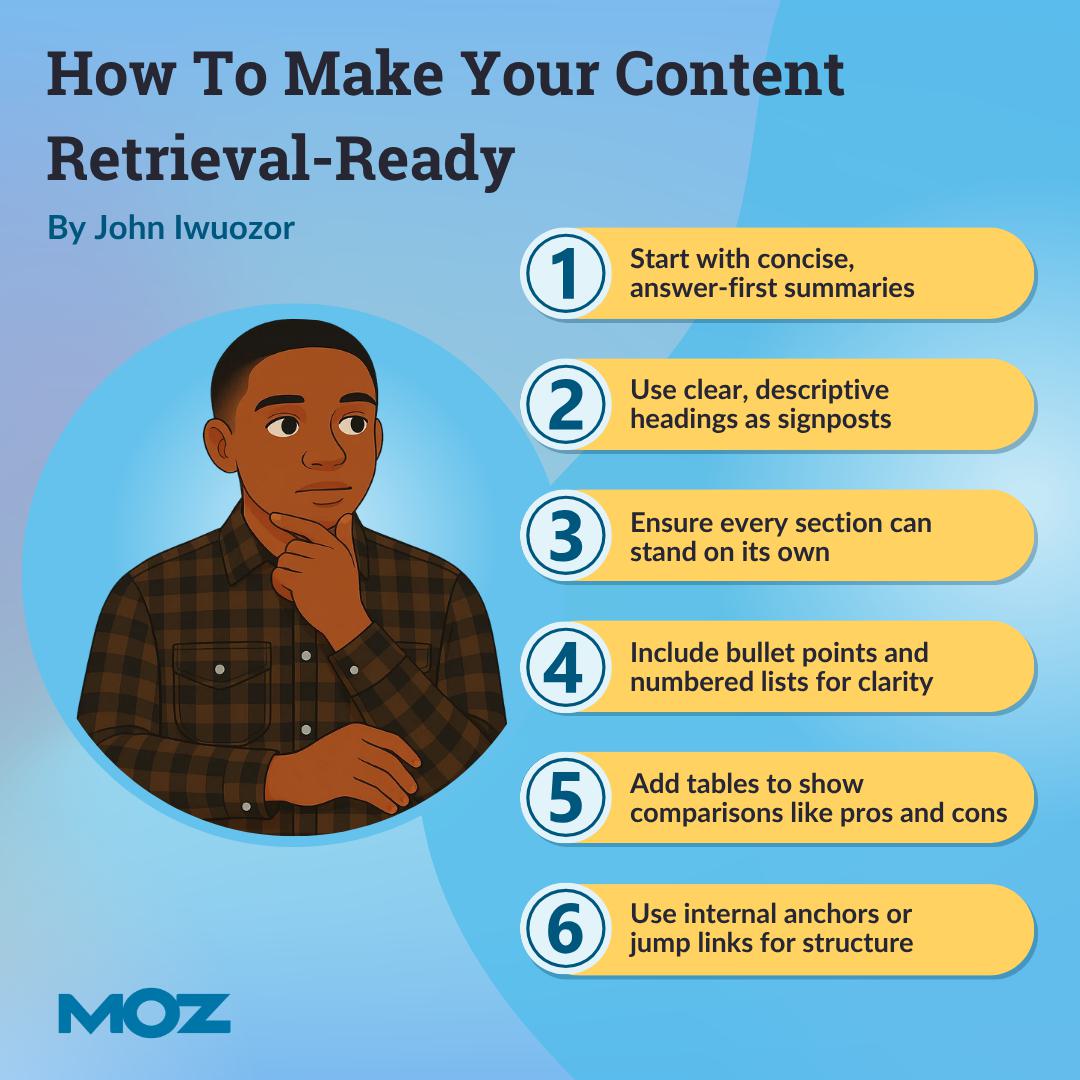
Here are some tips to make your content retrieval-ready:
- Ensure every section can stand on its own because the AI may lift it without the surrounding context
- Use clear, descriptive headings that act as signposts
- Include bullet points and numbered lists—they’re ideal for summaries and direct answers
- Add tables to show comparisons (like pros and cons or feature specs)
- Use internal anchors or jump links to reinforce modularity
- Start each section with a concise, answer-first summary before expanding
This article follows that structure. Retrieval-optimized content tends to be more scannable, actionable, and aligned with how AI systems and readers navigate information today.
3. Become a primary source, not a secondary interpreter
There’s a reason some content gets cited, and most gets ignored. Primary sources create new information while secondary sources interpret existing information.
AI systems likely favor primary sources because they introduce net-new information into the ecosystem. That means:
- Original research
- Industry benchmarks
- Proprietary frameworks
- Surveys
- Op-eds
Basically, content that didn’t exist before you created it.
Original content gets cited across channels, earns backlinks from trusted domains, and positions you as a thought leader. It’s hard to compete with content that other authors reference to support something they’ve said.
For example, Tom Capper's research on the HCU was widely cited in the industry and earned links from sites like Ahrefs and Search Engine Journal.
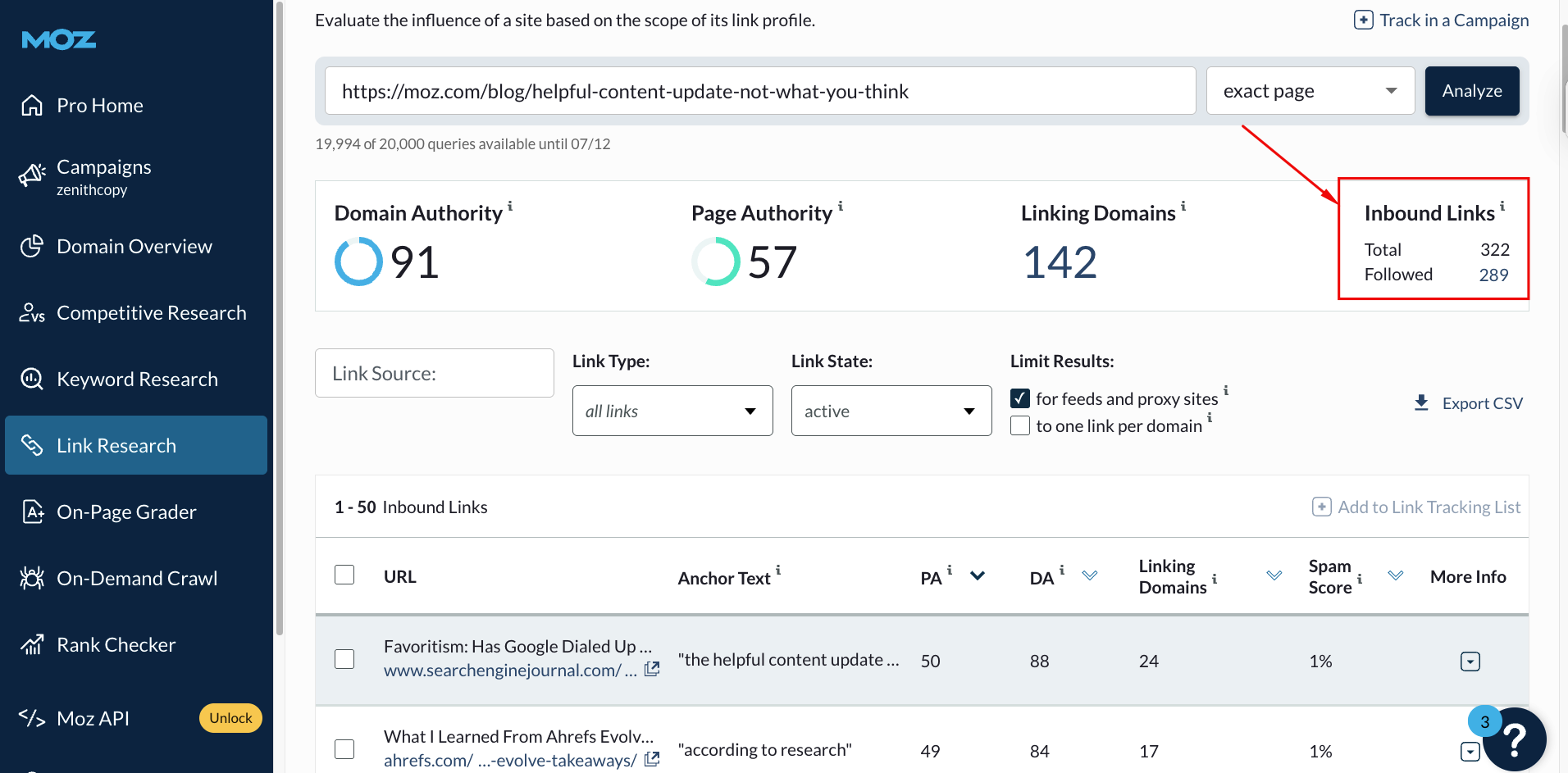
Mike King is another excellent example. He was one of the first thought leaders to publish content on Google API Leaks and Google’s AI Mode. The article on the API Leaks has earned over 2,000 inbound links from sites like The Verge.
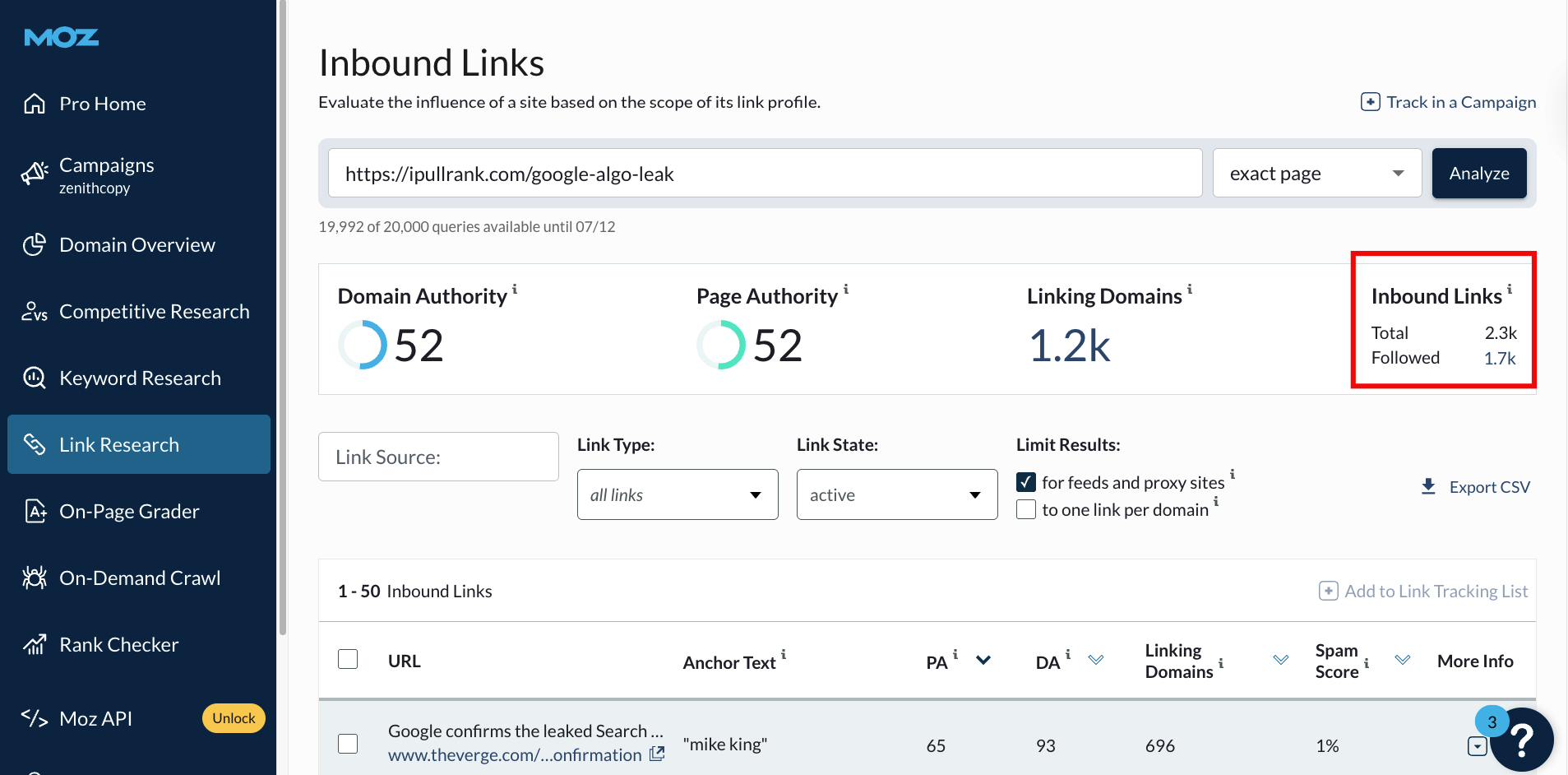
4. Design for multimodal consumption from the start
AI systems now process text alongside images, video, and audio. Hence, your content strategy should be multimodal to work across platforms.
For example, if you're explaining a process, add a video to make it actionable, and if you're presenting data, include charts to tell a story independent of text.
A few benefits of multimodal content include:
- Accessible content suited to individual preferences
- Expand your visibility across platforms
- Increase your chances of earning citations from AI search
- Future-proof your work as search technology continues to evolve
I recommend reading this article by Chima Mmeje, in which she discusses using webinars as a tool to create multimodal content.
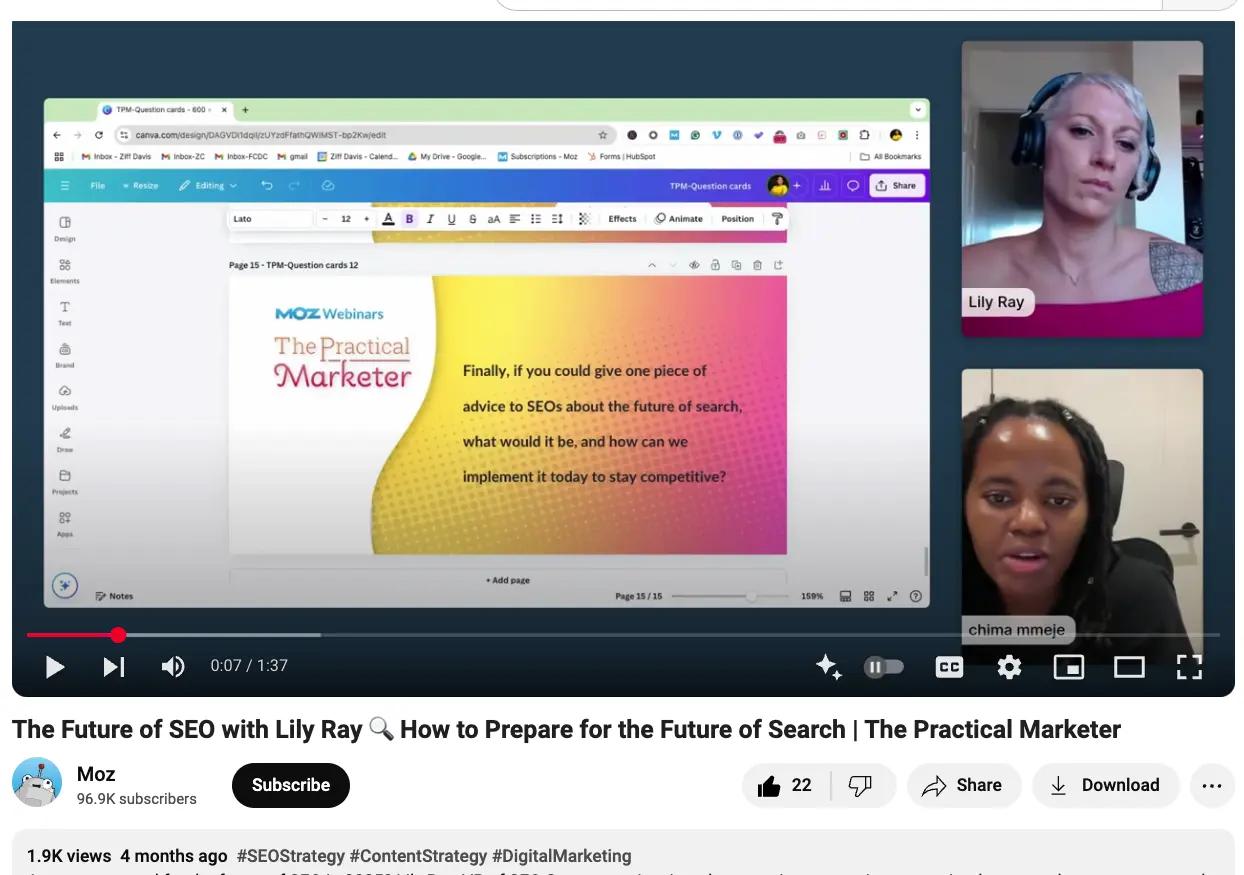
The full-length webinar video turns into:
- Short-form YouTube videos
- A series of blog posts
- Graphics used within the blog and on social media
- Quotes featured in other articles
Multimodal content allows Moz to diversify visibility efforts and show up in channels where their audience hangs out.
5. Create content for direct audience relationships
Google’s AI search features are designed to keep users in its ecosystem with detailed answers that don’t incentivize clickthrough. Google may say otherwise, but take that with a pinch of salt.
The solution is to create content that makes people come to you for information. It overlaps with the “original research” strategy, but goes broader to building an ecosystem that doesn’t rely on search traffic to function.
Owned channels are the best way to attract direct traffic. You can:
- Publish content that earns affinity
- Nurture your email lists
- Build community on platforms you control
- Start a podcast or webinar series to engage your audience
Direct relationships compound over time. Every touchpoint strengthens your connection and increases the chances of future engagement, no matter how search evolves.
Further reading:
We need to start thinking like publishers
6. Optimize for AI citation and verification
Google’s AI cites sources when providing answers to queries. It chooses citations based on semantic alignment and authority signals.
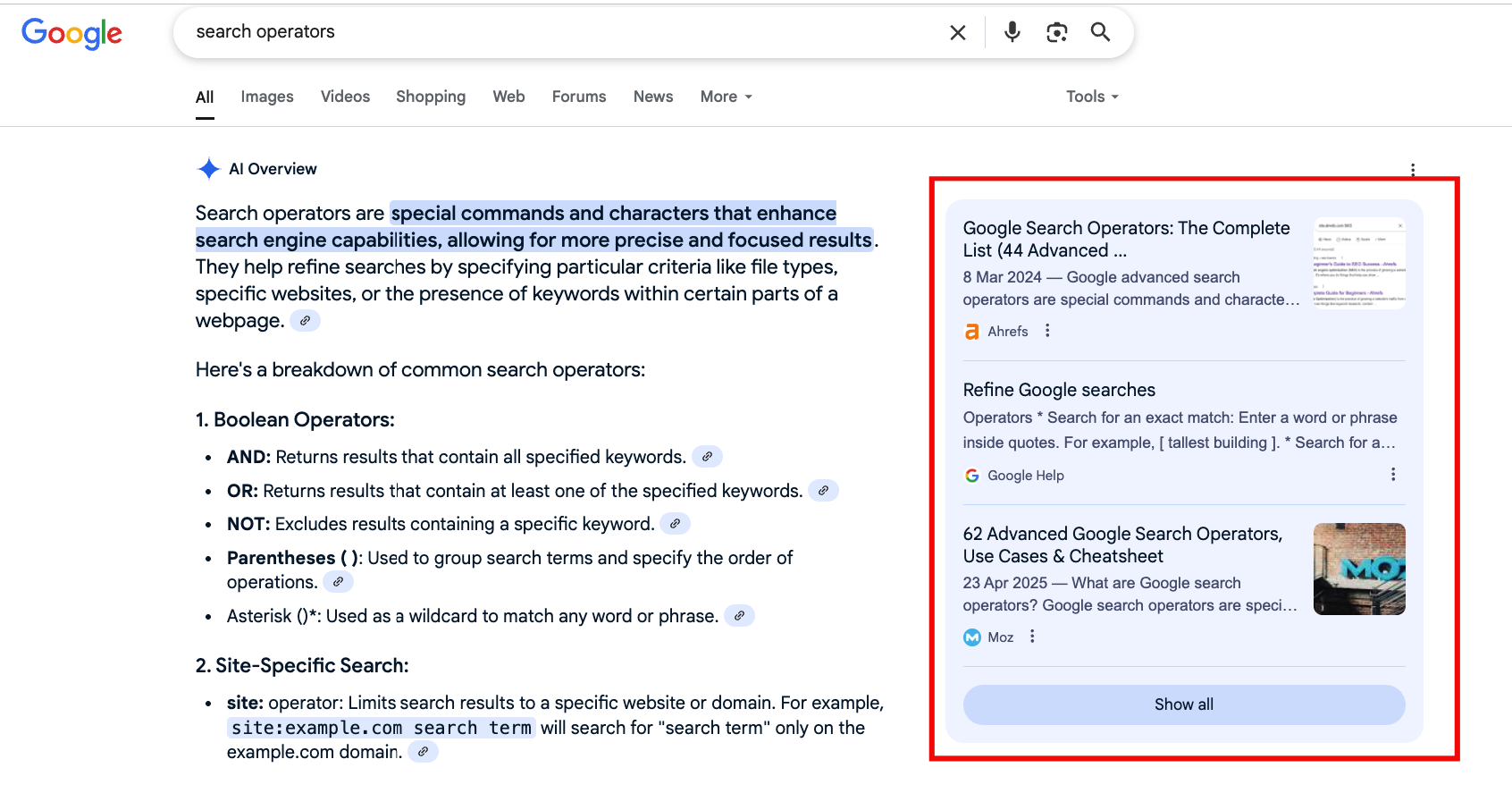
The patent confirms that once a response is generated, Google runs a separate retrieval pass to find content that verifies its claims. If your content closely matches the AI’s semantic intent and carries the right trust signals, it’s more likely to be cited.
A few tips to optimize your content for AI citation include:
- Semantic clarity: Write accurate, unambiguous content that aligns closely with your topic’s core concepts.
- Structured evidence: Use stats, expert quotes, case studies, and cited sources to validate key points.
- Domain-level trust: Build links from authoritative sites and maintain strong E-E-A-T signals.
- Entity reinforcement: Get your brand and internal SMEs mentioned across reputable publications to feed Google’s entity recognition systems.
Further reading:
- The AI Search Content Optimization Checklist by Aleyda Solis
- What Drives AEO Readability by Josh Spiker
Concluding thoughts: Search is becoming an AI-first experience
Google is transforming search from its usual "ten blue links" into an AI engine that provides answers without sending users to your site.
To stay relevant, focus on:
- Building comprehensive Brand Authority that survives algorithmic filtering
- Developing direct audience relationships that don't depend on search referrals
- Learning relevance engineering techniques that optimize for AI citation and search rankings



